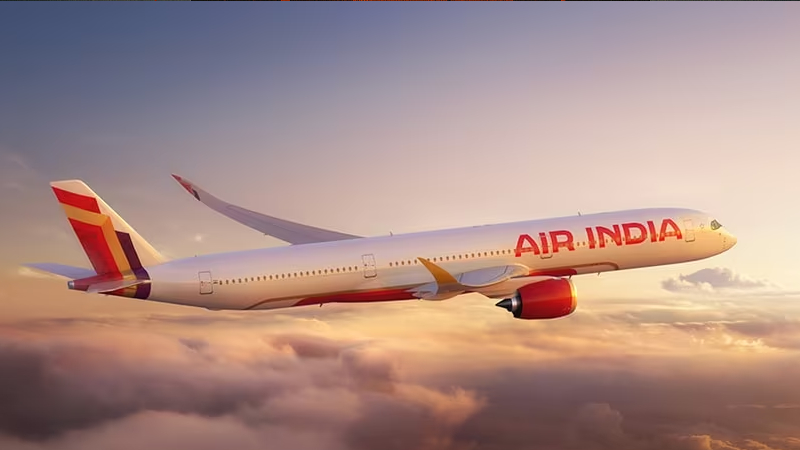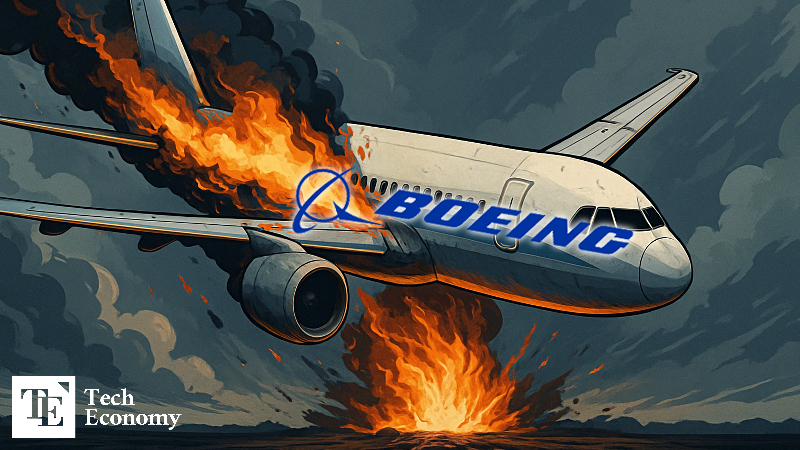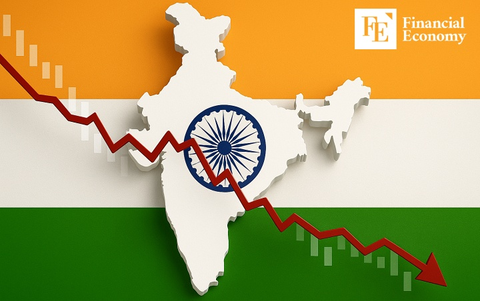Air India Crash That Killed 241 — It Was Boeing Again
Input
Modified
Boeing 787-8 Dreamliner Explodes After Plunging One Minute Post-Takeoff Ongoing Safety Controversies Over the Years Erode Market Trust New CEO’s Efforts to Rebuild Image Go Up in Smoke

Boeing, the world-renowned American aircraft manufacturer, is once again in crisis. The company finds itself at the center of another aviation tragedy—this time involving one of its most advanced aircraft models. An Air India flight, operated using a Boeing 787-8 Dreamliner, crashed shortly after takeoff from Ahmedabad, India, killing 241 of the 242 people on board. This incident, already heartbreaking in its human toll, is reigniting a long-burning debate about the safety and oversight of Boeing’s aircraft. Despite the company’s ongoing efforts to restore public and investor confidence, the crash marks another devastating chapter in a string of fatal accidents that have plagued Boeing in recent years.
India’s Deadliest Crash in Years: A Dreamliner Goes Down
On June 12, at approximately 1:39 PM local time, tragedy struck near the Ahmedabad Airport in Gujarat, India. An Air India Boeing 787-8 Dreamliner, one of Boeing’s most advanced and widely used medium- to long-haul aircraft, crashed less than a minute after takeoff. The jet reportedly entered a sharp descent moments after becoming airborne and collided with a dormitory building of a state-run medical college in the Meghani Nagar district, located just east of the airport. The impact caused a massive explosion, triggering a secondary disaster for those on the ground.
The plane was carrying a total of 242 people—passengers and crew combined. According to reports, the nationalities included 169 Indian citizens, 53 British nationals, 7 Portuguese, and 1 Canadian. Out of everyone on board, only a single survivor has been confirmed. Rescue operations at the crash site revealed further casualties in the dormitory cafeteria, where the aircraft had struck with brutal force. According to Reuters, citing eyewitnesses and rescue teams, at least 30 to 35 bodies have been recovered from the rubble, and many more are feared trapped beneath the wreckage.
What has shocked many aviation analysts is the model involved: the Boeing 787-8 Dreamliner. Since its debut in 2011, the Dreamliner has been celebrated for its fuel efficiency, modern avionics, and composite design. Over 1,175 of the aircraft have been delivered to more than 70 airlines globally. Until now, it had never been involved in a fatal crash. The specific aircraft in this incident first entered service in 2013 and was officially delivered to Air India in January 2014.
This singular event has shattered the Dreamliner’s spotless safety record and raised grave concerns about whether Boeing’s systemic issues extend even to its flagship models.

Boeing’s Grim Track Record: From MCAS Failures to Structural Failings
While the Dreamliner had previously been considered a symbol of Boeing’s engineering excellence, the broader history of Boeing aircraft over the past decade tells a different story—one defined by recurring failures, defective systems, and mounting death tolls.
The most high-profile among these was the Lion Air crash in October 2018, in which a Boeing 737 Max 8 plunged into the sea just 13 minutes after takeoff from Jakarta, killing all 189 people on board. Merely five months later, another 737 Max 8 operated by Ethiopian Airlines crashed shortly after departing Addis Ababa, claiming 157 more lives. Investigators later discovered a fatal flaw in the Maneuvering Characteristics Augmentation System (MCAS)—a flight stabilization system meant to prevent stalls. The software repeatedly forced the aircraft’s nose down due to erroneous sensor readings, overpowering the pilots’ efforts to regain control.
The fallout from those accidents led to a global grounding of the 737 Max fleet and exposed serious lapses in Boeing’s internal safety culture and regulatory oversight. The issue wasn’t just the MCAS itself—it was how Boeing had minimized its significance in pilot training manuals. It allegedly misled the FAA during certification, but the problems didn’t end there.
In January 2024, an Alaska Airlines 737 Max 9 suffered a terrifying structural failure mid-flight. A window and part of the fuselage detached at an altitude of about 5,000 meters just after takeoff from Portland International Airport. While miraculously no one was injured, the incident caused severe reputational damage to Boeing and was a tipping point that led to the resignation of then-CEO Dave Calhoun. His role was taken over by Robert Kelly Ottburg, an engineer by background, tasked with repairing Boeing’s credibility.
Older Boeing models haven’t fared any better. In January 2021, a 737-500 departing Jakarta crashed into the sea, killing 62 people. In March 2022, a 737-800 went down in Wuzhou, China, claiming 132 lives. And in December 2024, a Jeju Air 737-800 crashed, killing 179 passengers—another devastating blow tied to the same 737 family. What was once considered Boeing’s most trusted aircraft line has now become synonymous with tragedy and systemic failure.
Confidence Falters Again Despite Recovery Efforts
In recent months, Boeing has made visible strides toward recovering its public image and financial standing. Under Ottburg’s leadership, the company focused on stabilizing production lines and securing large-scale orders to shore up confidence. In November 2024, Boeing concluded its first major labor strike in 16 years. By May 2025, it had reached a settlement with the U.S. Department of Justice to avoid criminal prosecution related to the 2018 Lion Air disaster—terms included significant compliance commitments and financial penalties.
These initiatives began to bear fruit: over a three-month stretch, Boeing’s stock surged nearly 45%, signaling a tentative return of investor faith. But that progress has now hit a wall.
Following the Air India crash, Boeing released a statement from Ottburg, stating that the company is “fully prepared to cooperate with the investigation led by India’s Aircraft Accident Investigation Bureau (AAIB).” The CEO reportedly spoke directly with the chairman of Air India, pledging Boeing’s “complete support” and vowing to defer entirely to Indian authorities regarding the findings and public communication. It was a strategic move to show responsibility and transparency—something the company had been previously criticized for lacking.
Still, the market’s response was swift and unforgiving. On June 12, the same day as the crash, Boeing shares dropped 4.79%, closing at USD 203.75 on the New York Stock Exchange. Shares of key suppliers like GE Aerospace and Spirit AeroSystems also took a hit, each declining more than 2%.
The crash has reignited long-standing skepticism among investors and regulators alike. Despite Boeing’s public relations push, the grim reality remains: faith in the company’s quality control, safety protocols, and corporate integrity is eroding—and now with the loss of 241 more lives, the cost is as stark as ever.





















